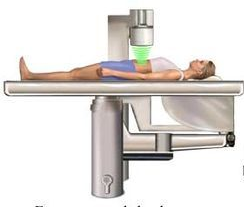Scientific Editor: Editorial Board ISUD website
- What is ESWL?
- When is ESWL performed?
- What sort of preparation is required?
- How is ESWL performed?
- What about after ESWL?
- What is the effect of ESWL on patient’s quality of life?
What is ESWL?
Extracorporeal Shock Wave Lithotripsy (ESWL) is a non-invasive technique generating shock waves from an external resource (outside the body) and transmitting them to the body through the skin, in order to break up urinary stones into small pieces that will be further eliminated from the body on their own.
When is ESWL performed?
Extracorporeal Shock Wave Lithotripsy (ESWL) is applied mainly to crush stones formed within the kidney (renal pelvis), the ureteropelvic junction (UPJ) and are smaller than 2cm. Depending on the case, it may be applied also in stones of different size or located at another site of the urinary tract (ureter – bladder).
What sort of preparation is required?
No special preparation is required. You will be advised to drink only water and not eat anything 2-4 hours before the procedure.
You should always inform your physician when you are on anticoagulant therapy, have a pacemaker or suspect you are pregnant.
How is ESWL performed?
There is no need for any type of anesthesia during ESWL, but you will be given strong analgesics and anti-inflammatory drugs. In order to penetrate and shatter the stone, there is use of radioscopy (high-energy radiation) or ultrasound (U/S) or both. Then, shock waves are generated by an external resource (outside the body) and transmitted to the body through the skin, with the aim of crushing urinary stones into many small pieces that will be further eliminated from the body on their own. While shock waves hit to fragment the stone, you may feel pain in the renal region and need to take extra analgesics. The procedure lasts 30-60 minutes depending on the size of stone.
What about after ESWL?
Upon discharge from hospital, you will be given specific instructions about:
- when it is safe to restart your anticoagulant therapy
- when you can resume to intense physical activity
- what sort of antibiotic regimen and analgesics you should receive postoperatively
What is the effect of ESWL on patient’s quality of life?
You may need to take analgesics and antibiotics for some days. You may also experience renal colic as small stone fragments travel down the urinary tract to be eliminated with urine. It is also normal to observe blood in urine within the next 48-72 hours.
Should there be any bruise in the renal region, this will subside within the next 2 weeks.
It is important to know that a small number of stones may not break up adequately and therefore there may be need for a second ESWL session or for some other intervention.


